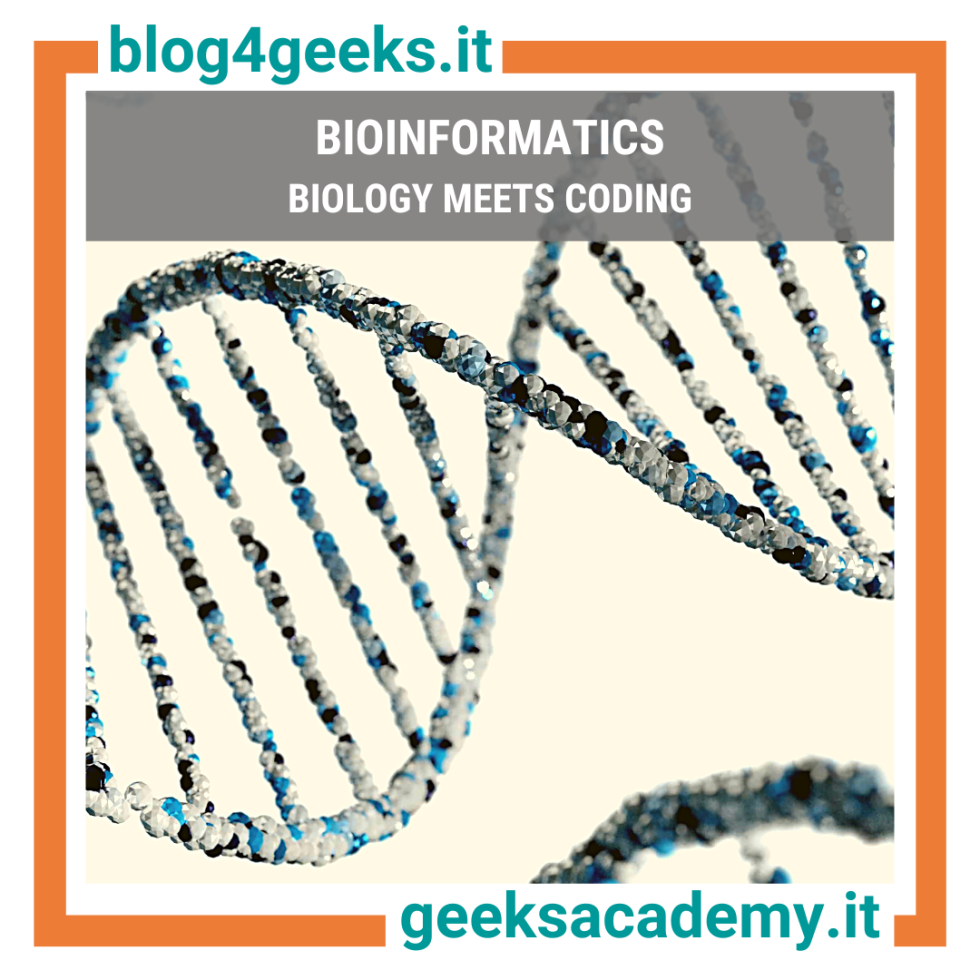
Discover Geeks Academy’s articles on: Blockchain, Coding, Cybersecurity, Cloud, Big Data, Artificial Intelligence, Gaming, Digital Innovation
Bioinformatics is an interdisciplinary field that develops methods and tools to understand biological data, especially when we work with large and complex datasets. Bioinformatics has experienced an explosive growth since the mid-1990s, driven in large part by the Human Genome Project and rapid progress in DNA sequencing technology. As an interdisciplinary field of science, bioinformatics embraces biology, chemistry, physics, computer science, information engineering, mathematics and statistics to analyze and interpret biological data. Bioinformatics is used for in silico analyses of biological queries, using computational and statistical techniques. The so-called 'in silico' analyses concern chemical-biological phenomena reproduced in a computer mathematical simulation.
Analyzing biological data to produce meaningful information involves writing and running software programs that use algorithms from graph theory, artificial intelligence, data mining, image processing and computer simulation.

Applications and use cases
Bioinformatics comprises biological studies that use programming as part of their methodology, as well as specific analysis pipelines that are carried out repeatedly, particularly in the genomics field. Bioinformatics common uses include the identification of candidates genes and single nucleotide polymorphisms (SNPs). Such identification is aiming to better understand the genetic basis of a disease. Furthermore, bioinformatics also seeks to understand the organizational principles within nucleic acid and protein sequences.
Image and signal processing enables the extraction of results from large amounts of raw data. In the field of genetics, such processing helps to sequence and annotate genomes and their observed mutations. Bioinformatics plays an important role in the biological literature and the development of biological and gene ontologies, thanks to text mining. Text mining is a technique which uses natural language processing (NLP) to transform unstructured text of documents into structured data. In the specific case, it is used to organize and query biological data. In addition to the cases already mentioned, bioinformatics has a strong impact on the analysis of the expression and regulation of genes and proteins. Bioinformatics tools help to compare, analyze and interpret genetic and genomic data and to understand the evolutionary aspects of molecular biology; it helps to analyze and catalog the biological pathways and networks that are a fundamental part of systems biology. In structural biology, it helps in the simulation and modeling of DNA, RNA, proteins and biomolecular interactions.
Computational biology and bioinformatics
Bioinformatics is a scientific field different from biological computation. Biological computation uses bioengineering and biology to build biological computers, while bioinformatics uses computation to better understand biology. Bioinformatics and computational biology involve the analysis of biological data, especially DNA, RNA and protein sequences. Both disciplines use data analysis and mathematical models to better understand biological systems.
Open-source libraries
Today, there are dozens of open-source projects and libraries specifically created for bioinformatics. The main programming languages already have specific libraries and each year big data initiatives related to bioinformatics increase. Some of the most used resources are Bioconductor, BioPerl, BioPython, BioJava, BioJS, BioRuby, Bioclipse, EMBOSS, Apache Taverna and GenoCAD.

The future is Big Data
During the past years, the total amount of data created has soared, mostly due to the expansion of the Internet of Things (IoT). The data market is therefore growing dramatically and, according to the latest estimates, is going to reach a value of $103 billion by 2027. Here are some figures about the world of data:
- Businesses generate approximately 2,000,000,000,000,000,000 bytes of data per day.
- 97.2% of companies invest in AI and Big Data.
While the numbers speak for themselves, companies struggle to keep up with the ceaseless creation of new data:
- About 95% of companies report an inability to understand and manage unstructured data.
- Only about 26% of companies say they have achieved a data-driven culture.
Don't live the future as a sidekick... be a superhero! Discover Geeks Academy’s training offer in AI & Big Data:
Sources:
https://biopython.org/
https://www.longdom.org/scholarly/python-for-bioinformatics--journals-articles-ppts-list-2878.html
https://www.genome.gov/human-genome-project